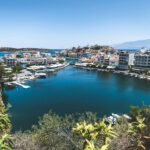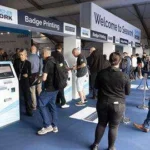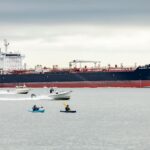Getting to Zero Coalition: New Mapping of Zero Emission Pilots and Demonstration Projects Underway

A new mapping of zero emission pilots and demonstration projects from the Getting to Zero Coalition reveals the scale and breadth of projects already underway and highlights key trends in the maritime sector’s path to decarbonization.
Zero emission fuels and technologies for maritime shipping need to be commercially viable by 2030 to meet decarbonization targets. This requires urgent action by stakeholders from across the maritime sector. It calls for innovative solutions which will help meet the goal of having zero emission deep sea vessels in operation within 10 years. The Getting to Zero Coalition, which set this goal in 2019, has done a mapping of the various projects which are driving the industry towards a greener future.
The mapping shows that there are already numerous zero emission pilots and demonstration projects underway in shipping. “The uptake of these projects is a vital step in the transition to zero emission shipping. They demonstrate that progress is already taking place and show direction for the whole maritime sector,” says Kasper Søgaard, Head of Research at the Global Maritime Forum, a Partner of the Getting to Zero Coalition.
At this point, the Getting to Zero Coalition has gathered 66 projects and this list will be updated bi-annually. Most of the projects come from Europe (49) with the next highest geographical concentration being Asia (16). In Europe, it is also common that the projects are publicly funded, which gives them a higher chance of success. “Governments can play a key role in de-risking first mover projects and in supporting the uptake of deep sea zero emission vessels by 2030,” explains Kasper Søgaard.
The projects concentrate either on ship technologies development or fuel production. “The majority of projects covering fuel production focus on green hydrogen which is largely due to hydrogen’s position as a ‘building block’ for the production of other fuels such as ammonia or methanol,” adds Kasper Søgaard.
Most of the projects (47) are planned as demonstration projects which means that they are capable of operation under real-world conditions. “Much of what needs to be achieved is already technically possible. The key issue here is to close the competitiveness gap between traditional fossil fuels and new zero emission fuels,” comments Kasper Søgaard.
By being able to see all the work that is already underway, the Getting to Zero Coalition wants to catalyze new ambitious pilots and demonstration projects. Their scale and variety can offer deeper insights into how the future of the maritime industry is unfolding and can generate learnings that can be used to further improve technologies and bring down the cost.
Learn more in this Getting to Zero Coalition Insight brief.
The Getting to Zero Coalition will convene virtually on 1-3 September for its second biannual working session.
For further information contact Head of Communications, Torben Vemmelund at tve@globalmaritimeforum.org or +45 2224 1446.
About the Mapping of Zero Emission Pilots and Demonstration Projects
The scope of the mapping covers pilots and demonstration projects which focus on zero emission pathways for the maritime industry. The focus on demonstration projects means that fuel production technologies which are already mature – for instance the production of traditional biofuels – are out of scope of the mapping.
The data for the mapping was collected initially through submissions by Getting to Zero Coalition members. The remainder of the projects were found through member websites as well as through publicly available sources from outside the Coalition. Where possible, we contacted project leads to verify the information we collected.
The projects in the mapping have been classified in terms of geographical spread, project focus, project type, and the fuel that the project follows. We also noted whether the project has received, or is anticipating receiving, public funding. Where a project has a significant connection to two categories (i.e. Asia and Europe), both of these have been counted for the purposes of the data.
About the Getting to Zero Coalition
The Getting to Zero Coalition is an industry-led coalition of more than 120 companies within the maritime, energy, infrastructure and finance sectors, supported by key governments and IGOs. The Coalition is committed to having commercially viable zero emission vessels operating along deep sea trade routes by 2030, supported by the necessary infrastructure for scalable zero-carbon energy sources including production, distribution, storage and bunkering. The Getting to Zero Coalition is a partnership between the Global Maritime Forum, the Friends of Ocean Action, and the World Economic Forum.
Photo by Gabriel Mikowski on Unsplash















